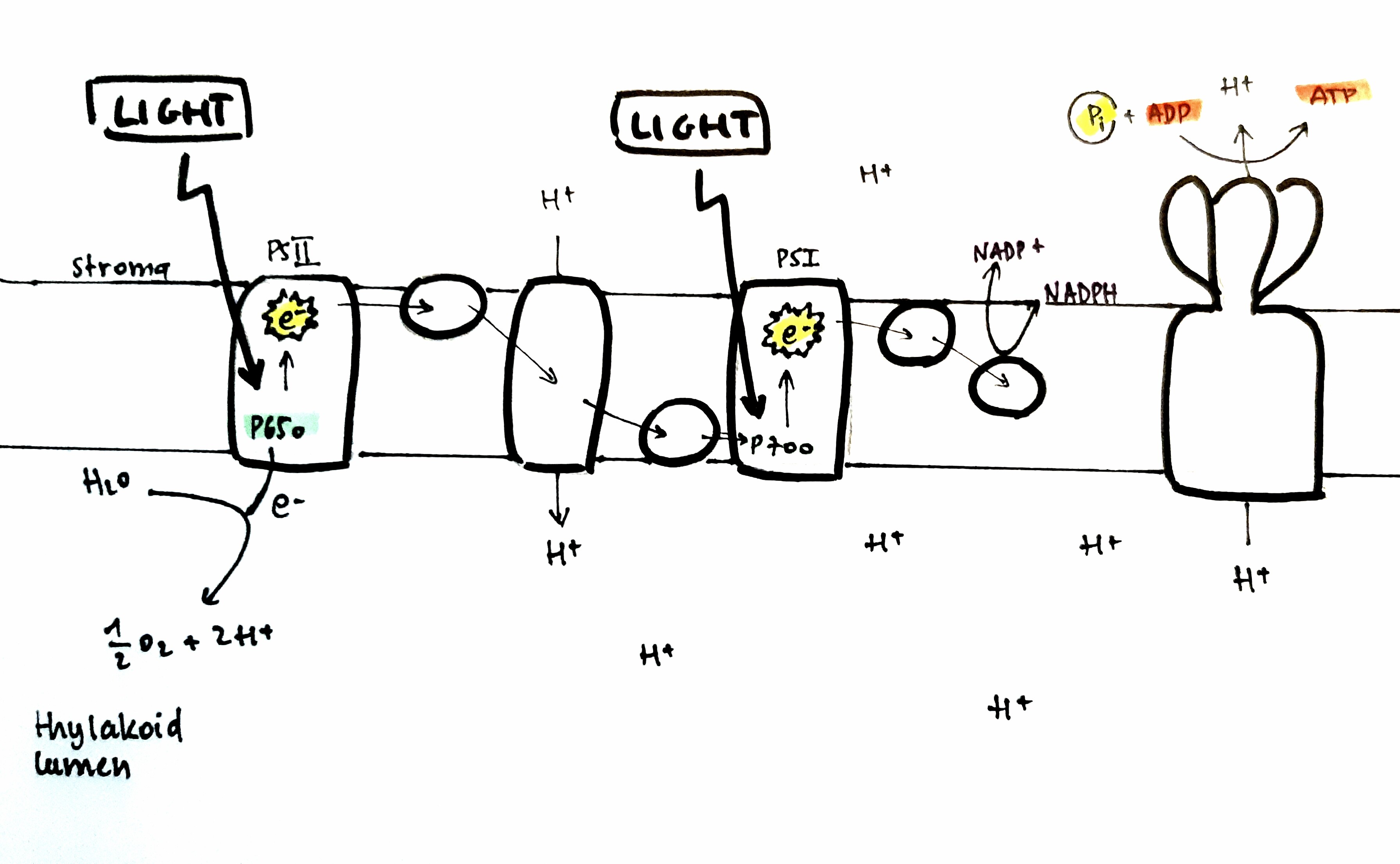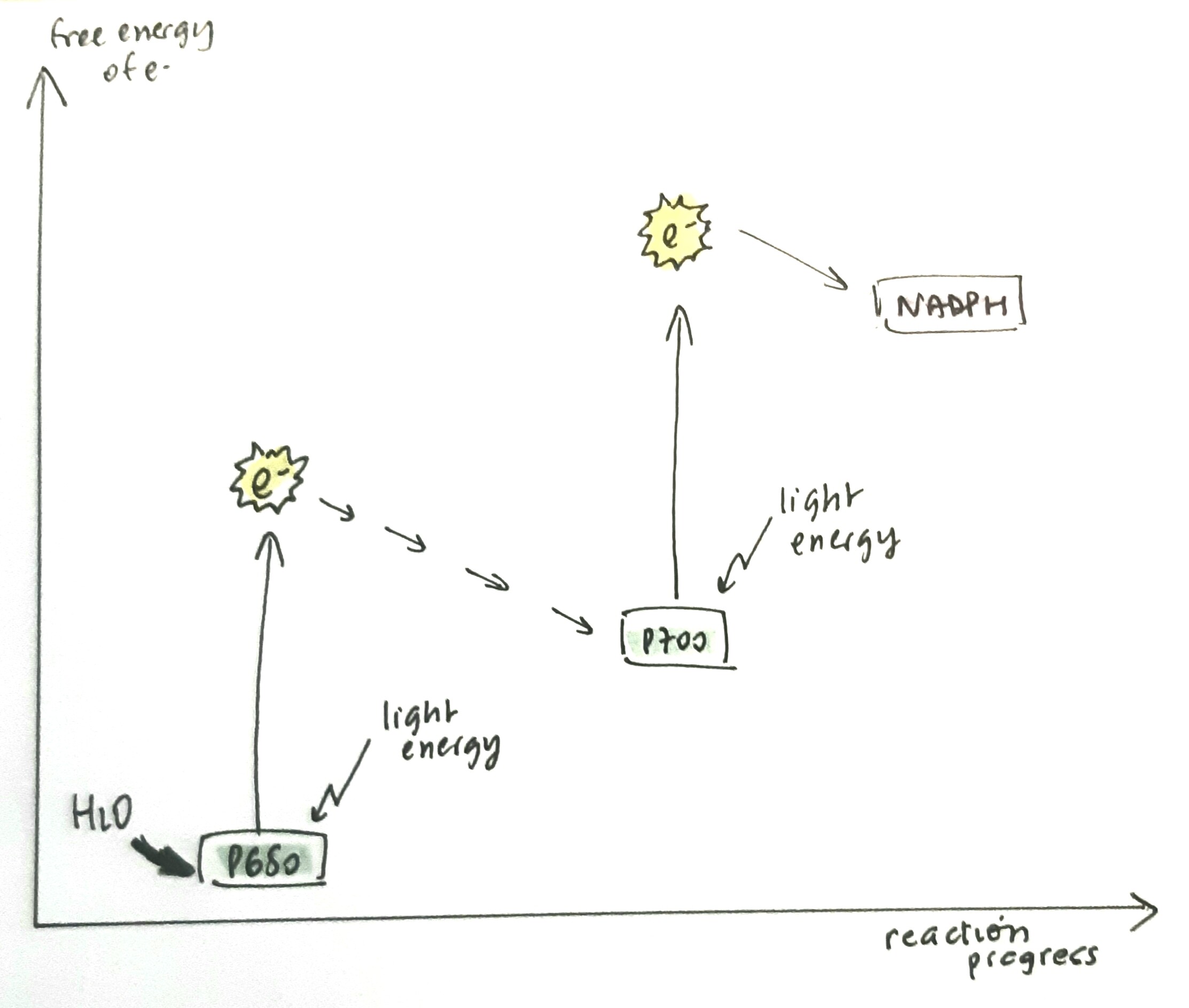The correct answer is A.
What is the purpose of photosynthesis ?
Photosynthesis, like the name suggests, is the synthesis of organic matter under the influence of light. The bio products are oxygen and glucose, which is a type of sugar.
It is the process that allows plants to create its tissues, combined with the extraction of minerals from the soil.
What happens during photosynthesis ?
There are 3 key elements to photosynthesis :
- light (solar energy)
- water (H2O) from the soil
- carbon dioxide (CO2) from the air
The main condition for photosynthesis to happen is the presence of light : under its influence, carbon dioxide is coupled with water and then split into a carbohydrate (glucose) and oxygen.
Here is a much simpler representation of that reaction :

Now, let’s make it a little bit more complicated :
The electron transport chain
First, we have to talk about the chloroplast. It is a plan organelle that is composed of different structures :
- the stroma is the inside of the chloroplast
- it has 2 membranes : one outer and one inner
-
thylakoids are compartiments inside the chloroplast
- a stack of thylakoids is a granum
The thylakoid is a structure in which light dependent reactions occur, also known as the electron transport chain. It results in the production of an ATP molecule.
Here is a diagram of the electron transport chain :

(It is P680 and not P650)
It is composed of 2 photosystems :
- PSI or P700
- PSII or P680
Both photosystems contain pigments ; their role is to collect light energy to ensure photophosphorylation (ADP is phosphorylated into ATP).
The light energy increases the electrons’ free energy and ultimately allows the production of NADPH.

But how is that relevant to the question ?
The Calvin cycle
The resulting ATP, combined with NADPH, enters the Calvin cycle. It is a set of chemical reactions that result in the production of glucose.

The carbon dioxide combines with an acceptor compound (NADPH), which breaks into two and each is reduced by hydrogen split from water by light.



